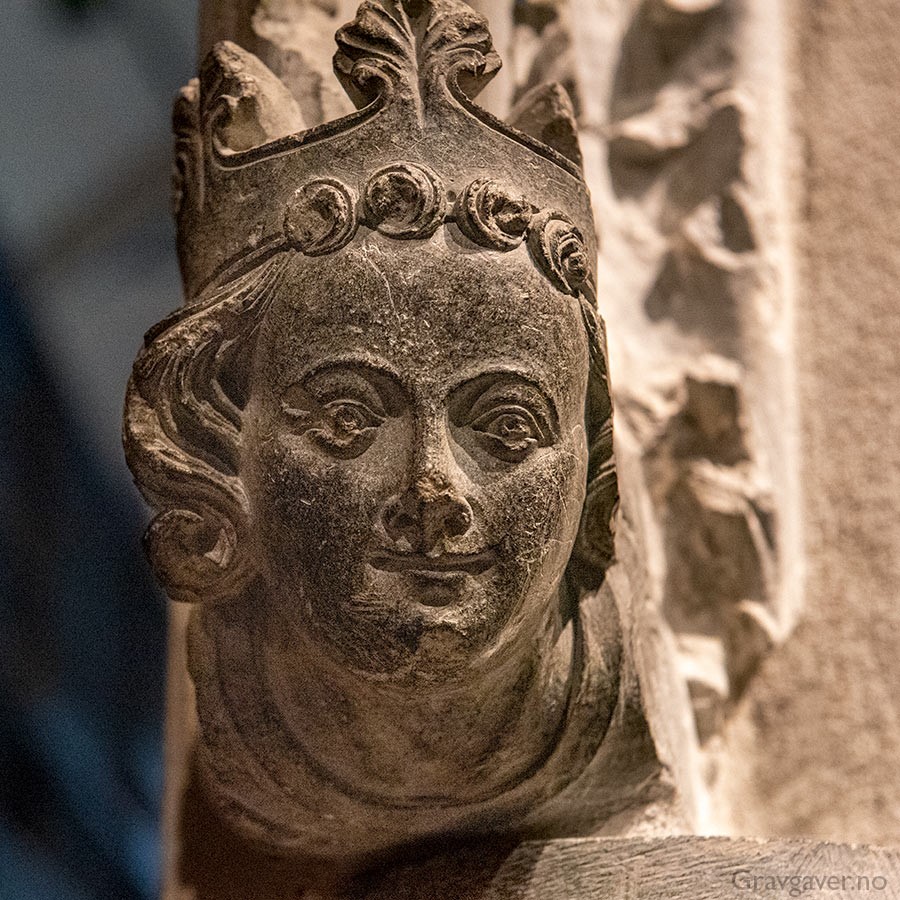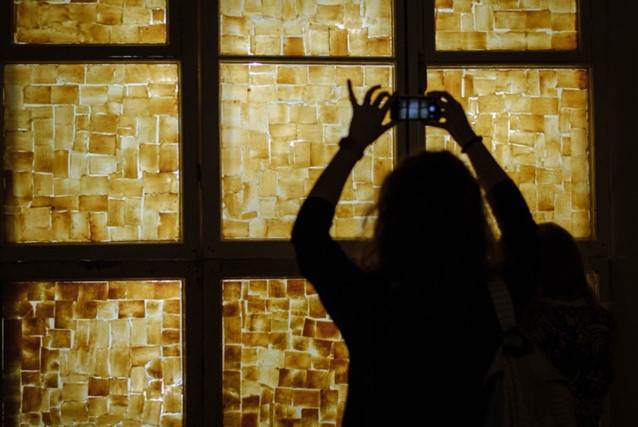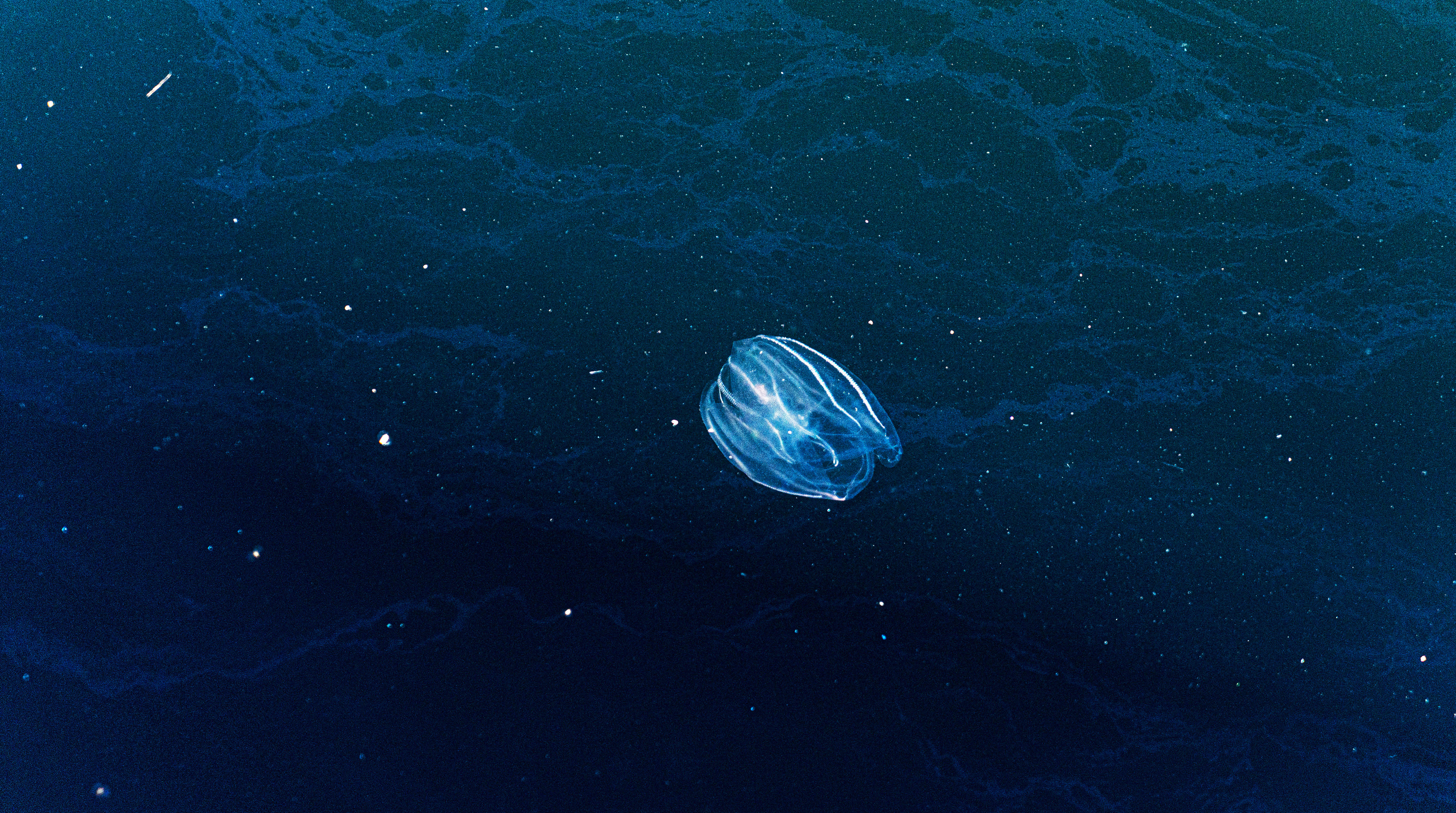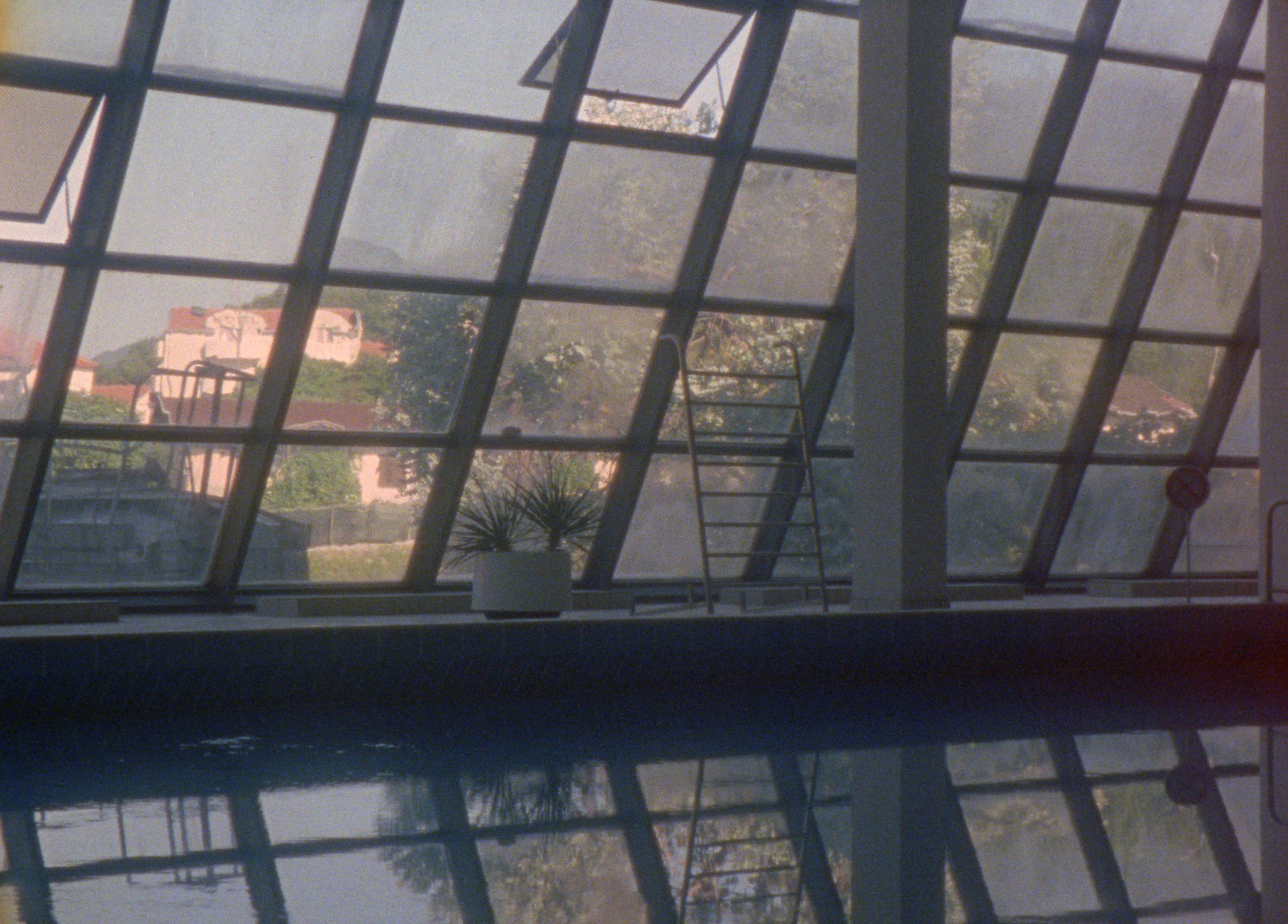Art History - Department of Art and Media Studies
Art History

Our art-historical research is primarily focused on old art from the Middle Ages. The political and cultural function of church art is explored through studies of the relative large occurrence of iconography that violates the purity ideals of the medieval church. Our second research focus is found in studies of contemporary art.
The political function of art is also a central point of reference, whether it is critically discussing forgotten female artists, Sami art, the function of the monument, the art market or art history writing as such. Experimental cognitive research creates a new understanding of artistic conventions, for example symmetry, which cuts across these centers of gravity and breaks new ground for art historical research methodology.
Research groups
Media, Data, Museums (2022)
Media, Data, Museums (2022)

The Media, Data, Museums research group is based in the Department of Art and Media Studies, NTNU. Group members pursue collaborative as well as individual research projects that explore the nexus of media, data, and museums from historical as well as contemporary perspectives.
Media, Data, Museums supports research that engages with historical media, cultural data, and/or museum collections and practices. The group offers a capacious and inclusive umbrella for a wide range of research topics and approaches, and a supportive arena in which to practise research in its many stages, with a particular emphasis on enculturing PhD students.
Topics of current research among members include the collection and preservation of popular music as cultural heritage; the feminist legacy in art museums; potentials for imagining other art histories through museum archives; the impact of digitization on the sources of art history, and the hidden bias of metadata in digitized art collections.
Group coordinator:
Faculty members:
PhD candidates:
Affiliated members:
Dimitra Christidou (National Museum)
Anna Näslund Dahlgren (Stockholm University)
Anne Ogundipe (Kulturdirektoratet)
Creative Documentary Research Group (2022)
Creative Documentary Research Group (2022)

This group’s mission is to bridge documentary theory and practice through experimentation. We experiment with theoretical concepts and models to generate new insight into the workings of documentary media in contemporary culture. We engage with creative documentary practices to communicate novel perspectives about the world we live in. At the core of the work conducted at CreaDoc is the idea that creative documentary forms do not only show and tell what has been or what is; they actively shape the limits of the real and push reality to actualise in new ways.
CreaDoc is an interdisciplinary research group where the functions of documentary media are investigated in their intertwinement to, for instance, ecology, architecture, social justice, public policy, historiography, and technology.
CreaDoc supports the research and creative productions of its members across all documentary media. It hosts symposia, screenings, and workshops, and provides an institutional platform for the development of scholarly and artistic projects.
Leader:
Faculty members:
PhD candidates:
Affiliate members:
Amir Bashti Monfared (HiVolda)
Ole Christoffer Haga (Innlandet)
Projects
Musems and Textiles in Trondheim (MUTE; 2023-)
Musems and Textiles in Trondheim (MUTE; 2023-)
In the project Museums and Textiles in Trondheim (MUTE), we explore how the ways we archive, describe, discuss, and exhibit textile objects determine their fate in art history.
Throughout the history of modern art, which coincides with the establishment of public museums in Europe, textile art has been viewed as inferior to painting. Does the fact that textile work has been associated with women’s work for centuries play a role in the devaluation of textiles in art history? And in what ways is this manifest in museum practices? We compare textiles and their vocabularies and histories across three different collections: the art museum, the design museum, and the cultural history museum.
The project is a collaboration between the NTNU, the University of Bergen, and the museums in Trondheim (MiST), which own comprehensive textile collections. These are: Nordenfjeldske Kunstindustrimuseum, Trondheim Kunstmuseum, and Sverresborg. The project is funded by the Norwegian Research Council’s programme Collaborative and Knowledge-building Project.
Read more about MUTE on this website (only in Norwegian)
Project Leader: Ulla Angkjær-Jørgensen
Histories behind History: Essays on Trondheim Cathedral (2023-)
Histories behind History: Essays on Trondheim Cathedral (2023-)

This book project explores ritual and artistic perspectives on the medieval cathedral of Trondheim, primarily discussing themes concerning the period 1100–1350. The book consists of ten stand-alone essays in Norwegian, presenting new research for a wider audience. These include an essay on the Easter liturgy as it is expressed in the Ordo Nidrosiense (the ordinal of the province from around 1200), the west façade as the main scene of this drama, and its processional use of the medieval town. Another essay brings Ash Wednesday and the Episcopal cathedral’s place in the use of public penance into focus. Several essays are dedicated to the sculptures of Trondheim Cathedral, as, surprisingly enough, both their dates and the multivalent meanings the various motifs may have held are hereto little explored themes. The rich and well-preserved Romanesque corbel tables of the transept feature a wide range of fantastic motifs, whereas the corbel table of the Octagon (c. 1200–1220, the structure surrounding the high altar and the shrine of St Olaf) shows faces of exceptional artistic quality, displaying attention and emotion, seeking to connect with each other and the viewer. A fire in 1328 brought about a restoration of the Octagon, probably completed by the time the Black Death reached Trondheim in 1349, and the hybrid embracing creatures adorning the capitals echo the fantastic creatures of the manuscript margins. Another essay explores the symbolism of the Octagon, and it's possible appearance in sources such as Raud’s thattr. The book project is financed by NFFO (The Norwegian Non-Fiction Writers and Translators Association). The course KUH3208/KUH2208, taught in the spring term of 2024, follows the work with this publication.
Project leader: Margrete Syrstad Andås
The Feminist Legacy in Art Museums (FLAME; 2020-)
The Feminist Legacy in Art Museums (FLAME; 2020-)
Why are art museums still lagging behind when it comes to collecting and representing art made by women? What are the frameworks for building collections today, and how are they rooted in storytelling and ideology? And not least, how can we make space for women’s art and culture?
These are questions we ask ourselves in the research project The Feminist Legacy in Art Museums. Museums’ inability to provide space for women as actors and cultural producers in both the present and the past is a democratic problem and a deficiency in museums as managers of cultural heritage.
We argue that the lack of attention paid to and research on art made by women in art museums and in collections is connected to a general lack of recognition of the feminist project in art history. We shall conduct empirical studies of the feminist avant-garde in the 1970s, its forms of exhibition and social spaces, and examine the institution’s ways of collecting and representing art.
Project leaders: Ulla Angkjær-Jørgensen og Sigrun Åsebø
PoeticA (2020-)
PoeticA (2020-)
PoeticA is a project in the field of neuroaesthetics that is financed through EEA and Norway grants with approx. NOK 12 million. It is a collaboration between the universities of Suceava (Romania), Bergen and Trondheim (NTNU) where interdisciplinary methods are used in the study of aesthetic experience in literature and visual arts. In part of our research, we use fMRI (functional magnetic resonance imaging) to analyze how the brain responds to so-called conceptual metaphors. Another part of the project combines methods from cognitive psychology and art history to analyze how we experience faces. The purpose here is to find out whether knowledge about facial perception based on empirical studies can be used in art historical research on portraits.
Project members:
Romania: Tudor Balinisteanu, Oana Geman, Ema Motrescu, Diana Izdrui
Bergen: Christer Johansson, Per Olav Folgerø, Karsten Specht, Annalisa Arcidiacono
Trondheim: Lasse Hodne, Dawn M. Behne, Vilde Sannerud Kalin, Johan-Magnus Elvemo
An Architecture of Chronic Illness (2018-)
An Architecture of Chronic Illness (2018-)

New stories of architecture and it's history, that are told from the chronically ill body, can help deepen our understanding of the complex interplay between bodies, buildings, and larger societal structures. We live longer today than before, and therefore, are experiencing more chronic conditions. The recent COVID-19 pandemic has put strains on the system, and a rise in electricity prices and living costs affect the availability of treatment options. Addressing these concerns, An Architecture of Chronic Illness is an interdisciplinary research project that springs from the field of architectural history. Aiming to bring previously marginalised voices into the narrative of Architectural history, this project places emphasis on the patients’ own experiences within the variety of architectures and structures (built or systemic) they encounter in their everyday life, past and present, by adopting a range of creative, interdisciplinary methods. To tackle these challenges, the project will have a main emphasis on the chronically ill, rheumatic body, and focus on to date undiscussed buildings that arguably should be more important within the narrative of architectural history.
The project draws on historical, medical, and cultural accounts of current practices of care and treatment. The Norwegian government has since 1976 been sending patients with rheumatic illness for climatic therapy in Igalo, Montenegro. When partaking in these treatment trips, patients undergo four weeks of active and passive treatment, based on the assertion that ‘rehabilitation in a warm climate has shown to be superior when it comes to easing the burden of symptoms like pain and fatigue’ (Strumse, 2011: 125). This treatment must be complimented with similar treatment at home, for optimal effect. As the patients inhabit the Institute for four weeks, their wellbeing improves, and patients return year after year. How do patients experience, think and talk about these spaces, where treatment takes place?
Alongside archival research, oral history, and cultural probes, we wish to see how artistic research methodologies, such as filmmaking, sound art, creative writing, and exhibition-making, can be used as methods to engage with these sites and buildings historically. Further, we wish to explore how a theorized, disabled body, can be used as a starting point in architectural history, offering a nuanced historical narrative where the unpredictable, contradictory, and ambiguous aspects of the way our bodies respond to buildings can come forth. How do patients both experience, and shape, buildings with their bodies?
Project leader:
Led by Associate Professor of Art History Anna Ulrikke Andersen, this project was first developed during a fellowship at Harvard Film Study Center 2018/19, supported by Viken Filmsenter fordypningsfond.
Outputs:
The project has resulted in a series of outputs, including Ubehandlet (with Anne Silje Bø and Therese Næss Diesen supported by Kulturrådet with Norsk Folkemuseum minner.no), On being and Bathing (with Abi Palmer supported by iPortunus), and Norway’s first summer school in art and architecture for young people with disabilities at ROM for kunst og arkitektur. As a fellow of the Future Architecture Platform 2021, Andersen was invited to curate the related exhibition Chronic Conditions: Body and Buildings, commissioned and organized by Lisbon Architecture Triennale. Findings have been published in Architectural Review, the Real Review, KINO! and Kunsthåndverk, while films have been screen at Berlin Short Film Festival, Arts Activated Australia and Barcelona Architecture Week.
PhD Projects
Solveig Lønmo - Hannah Ryggen and the Politics of Textile (2023)
Solveig Lønmo - Hannah Ryggen and the Politics of Textile (2023)
The motifs in Hannah Ryggen's tapestries are overtly political, figuratively expressing her clear moral attitude towards current social issues. This PhD project regards her choice of material and medium – textile fibres and tapestry – as having its own political intentions and consequences. Ryggen’s use of textile and her work’s interweaving with a complex textile tradition was both a feminist statement and revolt against inherent hierarchical structures in the art world. For centuries, textile art has been regarded as women’s work and hence relegated to the margins of art history, dismissed as harmless, purely decorative and therefore less important. By choosing – and reformulating – tapestry as a genre, and demanding entry into the innermost art circles, she presented her opinions not only as aesthetic statements with an ethical sting, but also as a specifically material insistence on the importance of textile art’s place in art history.
Nevertheless, the textile aspects of Ryggen’s work have been understated in the context of her being rediscovered by the international art world. By building the arguments for her art historical importance on conservative genre hierarchies, where textile art and crafts are considered degrading labels, Ryggen’s position is being safely simplified. The PhD project will answer this by considering and developing the critical potential of textile, and hence demonstrate the even richer complexity of Ryggen’s art.
PhD candidate: Solveig Lønmo
Pernille Zidore Nygaard - Mining the National Gallery for a Potential Otherwise (2021)
Pernille Zidore Nygaard - Mining the National Gallery for a Potential Otherwise (2021)
Mining the National Gallery for a Potential Otherwise: Reactivating Art Histories of 1970’s Norway
The project is a part of the larger research project The Feminist Legacy in Art Museums (2020-2025 Pl. Ulla Angkjær Jørgensen, NTNU, Sigrun Åsebø, UiB) and dives deep into the archives of Nasjonalgalleriet (The National Gallery) in the 1970’s in Norway to locate traces of ‘something else’. ‘Something else’ is established as artists mentioned in the archive, who despite generous, continuous, and often radical contributions to Norwegian art history and cultural life have not been regarded as relevant for a collection of cultural heritage such as the national collection of art nor as part of the country’s art history. These artists are thus seen to represent something different than the dominant narrative, and their presence as a hopeful starting point.
Through the meeting minutes of the period, the project dwells at such moments where potentials of ‘something else’ where proposed into the hegemonic narrative (but later rejected). From mere mentions of artists and exhibitions that the acquisition committee have seen but not acquired, the project finds a space from where to build other art histories, coming from within the most exclusionary, prestigious and thus hegemonic collection. The minutes are in this sense mined for traces and fragments of ‘something else’ that is then used as a starting points to build on.
The project thus offers a speculative and critically reparative reading from the archive. Methods that are unfolded in the thesis can be used as concrete tools to utilize large museum collections differently, in the wake of critiques that have for long shown collections of cultural heritage to have been largely shaped by nationalist, colonialist and patriarchal standards in the guise of universality. Furthermore, through case studies the project reactivates art histories that have for different reasons been halted, which are relevant to the present to better understand the nuances of the past that continue to shape art historic futures.
PhD candidate: Pernille Zidore Nygaard
Previous research
The Urnes Project (2018-2021)
The Urnes Project (2018-2021)
In 2018, a group of art historians and archaeologists from Ireland, the Netherlands, Germany, France, the United States and Norway held a workshop at the UNESCO site Urnes Stave Church, in Sogn on the west coast of Norway. The project was financed by UNESCO, the Norwegian University of Science and Technology, the National Trust of Norway, which is the owner of the site, and the Norwegian Directorate of Cultural Heritage.
In recent years, dendrochronology has provided Scandinavia with a wide set of data. As it stands today, Urnes is amongst the oldest of the 28 preserved stave churches, dating from c. 1131–32, but with the reuse of lavishly decorated late-Viking Age wood from an older church, dated to c.1070. Urnes has a raised central section, and the cushion capitals of the interior columns are adorned with a rich stock of motifs of fantastic and acrobatic beasts, animals, and human figures, well known from the pan-Romanesque vocabulary.
The project’s aim was threefold. Primarily, the project aimed to shed light upon the history of the monument itself and its place within the global Romanesque era, but it also strove to shed light upon the little-known history of decorated wooden buildings toward the end of the Viking age. Finally, by bringing together scholars from a variety of fields and universities, it was the project’s ambition to bring wooden churches, which before the arrival of the Romanesque were the dominant form of building across northern Europe, into the international scholarly debate. The results were published as an anthology in Brepol’s series Studies in the Visual Cultures of the Middle Ages in 2021, under the title “Urnes Stave Church and its Global Romanesque Connections.” The publication has later received positive reviews in renowned journals such as The Journal of the British Archaeological Association and the Collegium Medievale.
Project leader: Margrete Syrstad Andås
Reframing the Margin (2018-2021)
Reframing the Margin (2018-2021)
Reframing the Margin: The Role of Marginal Imagery in the Construction of the Sacred
From the earliest days of Romanesque until the end of the Gothic we find a large body of motifs that are neither biblical nor narrative. The popularity of fighting beasts, grotesque masks, and expressive faces was long-lived. These images often appear in the margins, and may thus be seen as commenting upon and defining the centre. One may find apt explanation for singular motifs, but mostly, these images are not presenting us with a puzzle, if only the right set of texts are studied. Often, their decorative qualities are far more obvious than any religious (or other) content This form of imagery challenges traditional iconography.
The field of medieval art history has debated the meaning of such images since the mid-nineteenth century. The interest in this art of ‘indeterminability’ has increased since the early 1990s, as they have been debated within the framework of ‘the monstrous’ or ‘the marginal.’ Accordingly, they are often referred to as ‘marginal art.’ The rise of visual studies has offered yet another chance to examine this puzzling and gripping artistic vocabulary. A substantial amount of the preserved material from medieval Norway feature such motifs. It is the ambition of the IKM research group to debate local exampled and conventions within their larger context. The group has a core of three medievalists, all in their different ways concerned with the ‘marginal’s’ role in the construction of the sacred. Ingrid Lunnan Nødseth debates how materiality and use of such motifs in textiles contributes towards the construction of the sacred. Margrete Syrstad Andås examines the role ‘marginal imagery’ in the creation of sacred spaces in stone and stave churches, whereas Margrethe Stang directs her attention towards the altar, and the mimic features of evil in panel painting as means of constructing the sacred.
Project leaders: Margrethe Stang og Margrete Syrstad Andås
PhD student: Ingrid Lunnan Nødseth
Gender and the Arts
Gender and the Arts
The interdisciplinary research group focuses on visual art, primarily Art History, Film Studies and film and art production. We hold that art, the work as well as processes of production and reception, creates, negotiates, and recreates culture. With a focus on gender and diversity, we investigate the complex interactions between the artist, the work of art, and art’s aesthetic and societal impact. Our projects cover:
- Artists. Under this headline, we discuss what happens to the production of meaning and identity when the authoritative and masculine position of the artist is challenged.
- Representations. Under this rubric, we ask ourselves how different kinds of art works, through formal qualities, themes, and production contexts, are shaped by and challenge dominant discourses of identity
- Institutions. This refers to studies of how art works by women are valued in critical discourse and represented in public space and cultural narratives.
Group coordinators:
Group members:
Affiliated members:
Margrete Abelsen (Utstillingsprodusent ved Trøndelag senter for samtidskunst
Members
-
Anna Ulrikke Andersen Associate Professor
+47-73592374 anna.u.andersen@ntnu.no Department of Art and Media Studies -
Margrete Syrstad Andås Associate Professor
+47-73591834 +4790186764 margrete.syrstad.andas@ntnu.no Department of Art and Media Studies -
Ulla Angkjær-Jørgensen Professor of Art History
+4747954490 ulla.angkjaer-joergensen@ntnu.no Department of Art and Media Studies -
Lasse Hodne Professor
+47-73590615 +4793693618 lasse.hodne@ntnu.no Department of Art and Media Studies -
Tore Kirkholt Associate Professor, Head of Department
+47-73596603 +4797534819 tore.kirkholt@ntnu.no Department of Art and Media Studies -
Ingunn Kvande
+47-73559352 ingunn.o.kvande@ntnu.no Department of Art and Media Studies -
Solveig Lønmo PhD Candidate
+47-73592435 +4792832048 solveig.lonmo@ntnu.no Department of Art and Media Studies -
Pernille Zidore Nygaard PhD student
+47-73412528 +4746420419 pernille.z.nygaard@ntnu.no -
Margrethe C. Stang Associate Professor
+47-73597735 +4797677206 margrethe.stang@ntnu.no Department of Art and Media Studies
